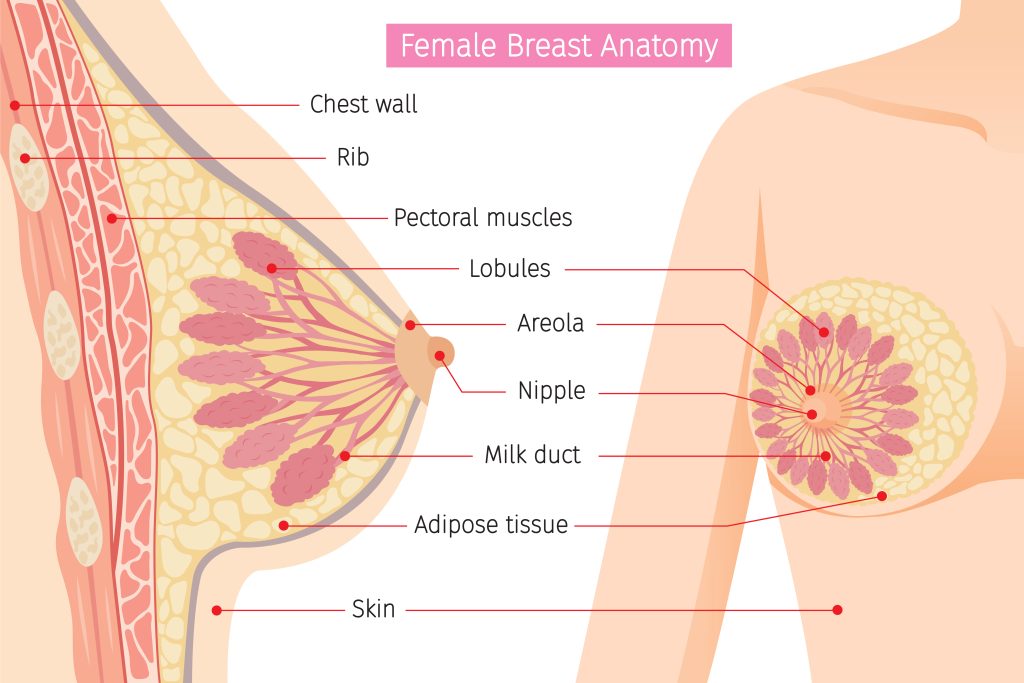Many women desire cosmetic procedures after they are done having children. Because of this, the way the body will be affected by additional pregnancies is not always taken into account. The exception to this is breast surgery. Breast surgery (like breast augmentation, breast reduction, or a breast lift) is desired by women of all ages to enhance the size and shape of their breasts. Because of the nature of breast surgery, many young women wonder how having children will affect their results, and how the procedure will affect breastfeeding. Breastfeeding is something that many women desire for mother-child bonding, and sometimes, young women feel the need to postpone their desired procedure to ensure that breastfeeding is still possible. Fortunately, with different techniques, young women can have both: confidence-enhancing breasts and the ability to breastfeed.
What Could Prevent You from Breastfeeding?
The ability to breastfeed relies on the health of the milk ducts. If the ducts are damaged, there is a significant possibility that you will not produce as much (or any) milk. Fortunately, there are ways to perform these surgeries without severing or damaging the milk ducts.

What Should You Know About Breast Augmentation?
Breast augmentation enhances the volume and shape of the breast using implants. There are two main incision choices: inframammary and periareolar. The inframammary method places the implant through an incision made along the breast crease. With this technique, the incision and implant are nowhere near the milk ducts, so damaging the connection is unlikely. Also, should you choose to place the implant under the muscle, you are giving yourself even more assurance, as the implant will not push against the ducts. The periareolar method has a greater chance of affecting your ability to breastfeed. The periareolar incision runs along the border of the areola, which could damage the connection between the milk duct and the nipple, interfering with the milk supply. While this does not mean that you will be unable to breastfeed, there is a chance that you could produce less milk. Some women, however, especially those with very small or underdeveloped breasts, may not have enough natural glandular tissue to breastfeed in the first place.
What Should You know About a Breast Reduction or Breast Lift?
Breast reduction and breast lift patients have more to consider when it comes to breastfeeding. Breast reduction removes a significant amount of breast tissue and often requires the relocation of the nipple-areola complex. This is also a potential factor in breast lift surgery. An incision around the areola may be necessary to move the nipple. This can sever the nerve that triggers the milk-producing reflex, potentially limiting milk production. In some patients, a reduction or lift can be performed without an incision around the areola. If this is the case, your chances for successful breastfeeding are increased.
Talk to Your Doctor
If breastfeeding is important to you, the most important step you can take is to talk to your doctor beforehand. Inform them of your concerns and wishes. Cosmetic procedures are customized for each patient, and the techniques used for your surgery may be able to be tailored to your wishes. There is no way to predict a woman’s ability to breastfeed before she tries. This is true for women who have had breast surgery and for those who have not. The best way to improve your chances is to inform yourself about surgical techniques, and always, to talk to your doctor.
To learn more, contact PREMIERE Center for Cosmetic Surgery by calling our office at (813) 413- 7717 or by filling out our online contact form.

